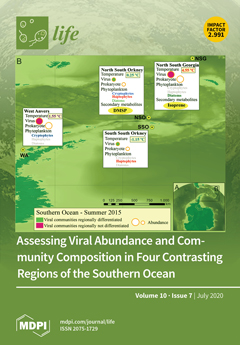Mussels of the family Unionidae are important components of freshwater ecosystems. Alarmingly, the International Union for Conservation of Nature and Natural Resources Red List of Threatened Species identifies almost 200 unionid species as extinct, endangered, or threatened. Their decline is the result of
[...] Read more.
Mussels of the family Unionidae are important components of freshwater ecosystems. Alarmingly, the International Union for Conservation of Nature and Natural Resources Red List of Threatened Species identifies almost 200 unionid species as extinct, endangered, or threatened. Their decline is the result of human impact on freshwater habitats, and the decrease of host fish populations. The Thick Shelled River Mussel
Unio crassus Philipsson, 1788 is one of the examples that has been reported to show a dramatic decline of populations. Hierarchical organization of riverine systems is supposed to reflect the genetic structure of populations inhabiting them. The main goal of this study was an assessment of the
U. crassus genetic diversity in river ecosystems using hierarchical analysis. Different molecular markers, the nuclear ribosomal internal transcribed spacer ITS region, and mitochondrial DNA genes (
cox1 and
ndh1), were used to examine the distribution of
U. crassus among-population genetic variation at multiple spatial scales (within rivers, among rivers within drainages, and between drainages of the Neman and Vistula rivers). We found high genetic structure between both drainages suggesting that in the case of the analyzed
U. crassus populations we were dealing with at least two different genetic units. Only about 4% of the mtDNA variation was due to differences among populations within drainages. However, comparison of population differentiation within drainages for mtDNA also showed some genetic structure among populations within the Vistula drainage. Only one haplotype was shared among all Polish populations whereas the remainder were unique for each population despite the hydrological connection. Interestingly, some haplotypes were present in both drainages. In the case of
U. crassus populations under study, the Mantel test revealed a relatively strong relationship between genetic and geographical distances. However, in detail, the pattern of genetic diversity seems to be much more complicated. Therefore, we suggest that the observed pattern of
U. crassus genetic diversity distribution is shaped by both historical and current factors i.e. different routes of post glacial colonization and history of drainage systems, historical gene flow, and more recent habitat fragmentation due to anthropogenic factors.
Full article






